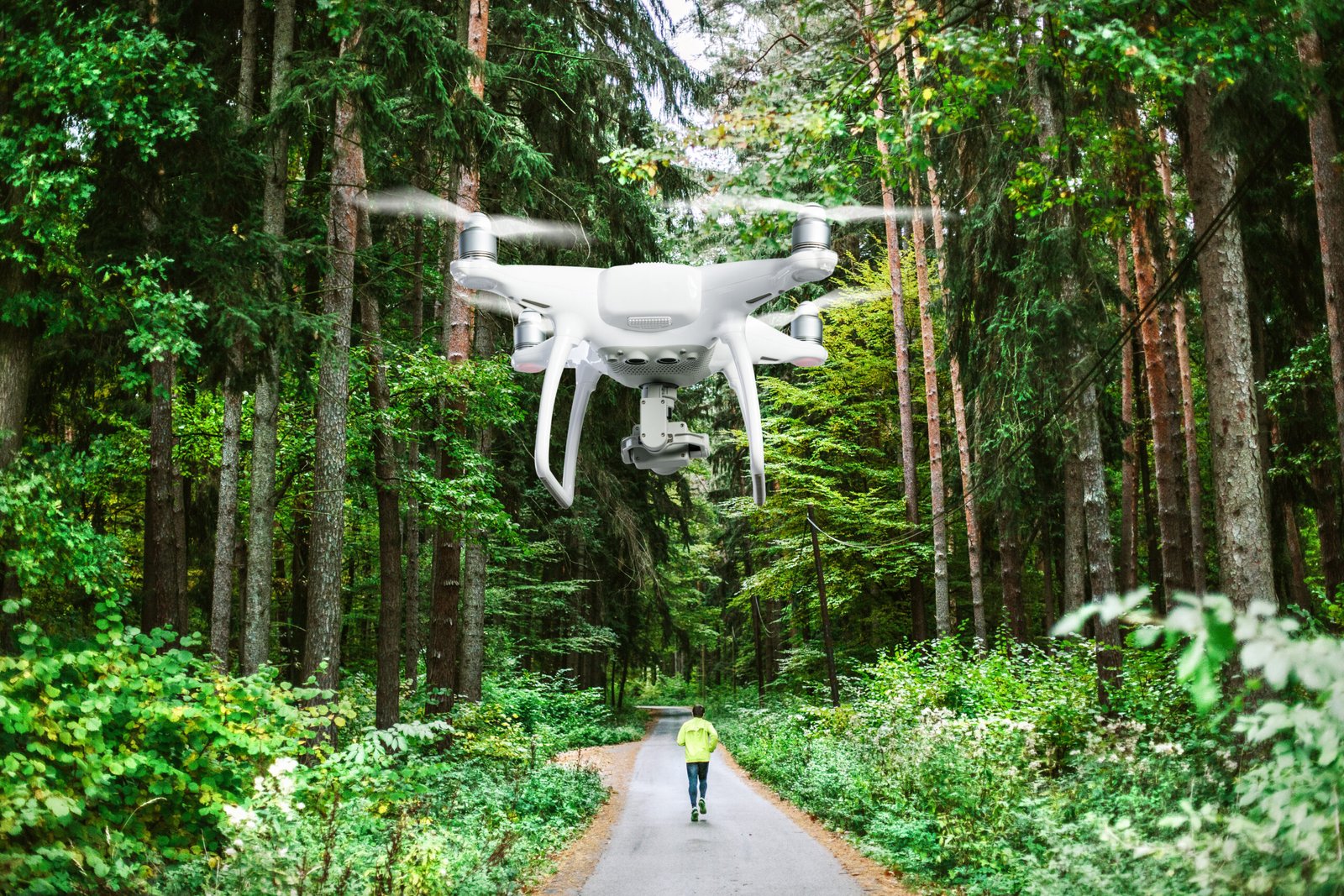Simulators
Flying Green: How Sustainable Practices are Transforming Aviation
In recent years, the aviation industry has been undergoing a remarkable transformation, driven by the urgent need for sustainable practices. Amidst growing environmental concerns, innovative technologies and education are paving the way for a greener future in flying. From advanced simulators to drones, the landscape of aviation is evolving rapidly.

One of the cornerstones of this evolution is technology training. Flight simulators have become indispensable tools in pilot training programs. These sophisticated machines not only provide aspiring pilots with a realistic flying experience but also allow them to practice emergency procedures and understand complex aircraft systems without any risk. With features that mimic real-world weather conditions and air traffic scenarios, simulators are crucial for preparing pilots to handle challenges they might encounter in actual flight situations. Moreover, as airlines increasingly prioritize sustainability, training programs are beginning to incorporate eco-friendly practices into their curricula.
For anyone looking to dive deeper into the world of aviation or enhance their knowledge about green initiatives within the sector, numerous blogs and websites serve as excellent resources. Notable recommendations include “Airline Reporter,” which covers industry news and trends; “Aviation Week,” offering insights into technological advancements; and “GreenAir Online,” dedicated specifically to sustainable aviation developments. Social media platforms like Instagram and Twitter also host vibrant communities where enthusiasts share insights, experiences, and discussions about sustainable flying practices.
Online courses have surged in popularity over recent years, providing flexible learning opportunities for aspiring pilots and aviation professionals alike. Ground schools now offer comprehensive programs covering everything from aircraft systems to navigation techniques online. Institutes such as Embry-Riddle Aeronautical University provide courses tailored to modern demands—focusing on sustainability as part of their curriculum. Whether you’re aiming for a career as a commercial pilot or exploring roles in airport management or aerospace engineering, these online resources can help you gain valuable knowledge while adhering to your own schedule.
Drones represent another fascinating aspect of this transformative phase in aviation. As unmanned aerial vehicles (UAVs) become more commonplace, industries beyond traditional aviation are leveraging their potential for enhancing efficiency and reducing carbon footprints. Drones are employed in agriculture for crop monitoring; they assist first responders during emergencies; even package delivery services are experimenting with UAVs as an alternative transport method that could reduce road congestion and emissions.

For those interested in pursuing careers within this dynamic sector, job opportunities abound—from piloting aircraft to working on environmental strategies at major airlines. The FAA’s website is an essential resource for aspiring aviators wanting information on regulations, safety guidelines, and certification processes necessary for various roles within the field.
As we witness shifts toward greener practices across all facets of life—including transportation—the aviation industry is stepping up its game with commitment and creativity. By embracing technology-driven solutions like flight simulators and drones while fostering educational opportunities through online courses and ground schools, there’s hope that we can achieve more sustainable air travel without compromising safety or quality.
In conclusion, flying green is not just a trend; it’s becoming an integral part of our future in aviation. With continued innovation paired with education focused on sustainability principles, we can transform how we navigate our skies—ensuring they remain open for generations yet to come!
Behind the Cockpit: A Day in the Life of a Commercial Pilot
The allure of flight captivates many, but few truly understand what it takes to become a commercial pilot. Behind the glamour of soaring through clouds and landing at exotic destinations lies an intricate world of training, technology, and constant learning. Buckle up as we take you on an enlightening journey through a day in the life of these modern aviators.
The journey begins long before a pilot steps into the cockpit. Aviation training has evolved dramatically, incorporating cutting-edge technology that enhances learning and safety. One crucial component is flight simulators. These high-tech devices replicate real flying conditions with astonishing accuracy, allowing aspiring pilots to perfect their skills without leaving the ground. From handling emergency situations to navigating complex airspace, simulators provide invaluable experience that prepares pilots for real-life challenges.
For those eager to dive deeper into aviation knowledge, numerous resources exist online to enhance understanding and expertise. A plethora of aviation blogs and websites offer insights from seasoned professionals and enthusiasts alike. Some noteworthy mentions include “Airline Reporter,” which covers industry news and trends; “Flying Magazine,” known for its comprehensive articles on aircraft and techniques; and “PILOTWORKS,” focusing on pilot training tips. Additionally, social media platforms like Instagram and Twitter are teeming with aviation influencers sharing snippets of their experiences, tools of the trade, and breathtaking aerial photography.
Education doesn’t stop once one earns their wings; ongoing learning is integral to maintaining proficiency in this dynamic field. Online aviation courses have gained popularity due to their flexibility and accessibility. Platforms like Coursera or Udemy offer a range of subjects from meteorology to aircraft systems management—all tailored for aspiring aviators or even seasoned pilots seeking to broaden their horizons. Ground schools also play a critical role in preparing students for FAA exams while providing essential theoretical knowledge about aviation regulations, navigation systems, and aerodynamics.
As they gain experience through various channels—training flights in small planes or shadowing veteran pilots—many individuals wonder about job prospects in this competitive landscape. The demand for qualified pilots has surged in recent years due to rising air travel rates globally. Airlines frequently advertise openings on their websites while organizations such as Avjobs.com specialize in aggregating pilot job listings across various sectors. Opportunities abound not just within commercial airlines but also through cargo services, charter companies, or even corporate jet operations.
In recent times, drones have entered the conversation as an exciting development within aviation technology. While they primarily serve recreational purposes now, drones are steadily being integrated into industries such as agriculture, logistics, surveillance, and more! This expansion opens new avenues for pilots trained specifically in unmanned aerial vehicle (UAV) operation—a fascinating intersection between traditional piloting skills and modern technological advancements.
For those intrigued by regulatory standards governing aviation practices in the United States—and indeed worldwide—the Federal Aviation Administration (FAA) provides a wealth of resources online: everything from licensing requirements to safety guidelines can be found on their official website (faa.gov). Staying updated with these regulations ensures that pilots maintain compliance while fostering safer skies for everyone involved.
As we conclude our peek behind the cockpit door into a commercial pilot’s life—filled with rigorous training sessions using state-of-the-art simulators; educational pursuits via online courses; bustling career opportunities; revolutionary drone technology; alongside vital FAA resources—we hope you gain an appreciation for these skilled professionals who turn dreams of flight into reality each day!
Exploring the Skies: The Most Scenic Flights Around the World
Aviation has always captured our imagination, transporting us to new heights—both literally and figuratively. With advancements in technology, flying is becoming not only more accessible but also an exhilarating experience filled with breathtaking views. Whether you’re a pilot or just an enthusiast, there are numerous avenues to explore this thrilling field. From training simulators to scenic flights across the globe, let’s dive into what makes aviation so captivating.
Training is a crucial aspect of becoming a skilled aviator. Modern flight simulators replicate real-world flying conditions with astounding accuracy. These high-tech platforms allow aspiring pilots to hone their skills without leaving the ground. Simulators can mimic various weather scenarios and emergency situations, providing invaluable practice that enhances safety in real-life flights. Institutions offering online aviation courses often emphasize simulator training as part of their curriculum, ensuring students are well-prepared before taking to the skies.
If you’re seeking inspiration or information about aviation, countless blogs and websites cater to enthusiasts at every level. Websites like Airliners.net and FlightAware provide up-to-the-minute data on flight paths and schedules, while blogs such as The Points Guy delve into travel hacks that can enhance your flying experience. Social media platforms like Instagram and Twitter have vibrant communities where aviation aficionados share stunning aerial photography and personal stories from their journeys.

For those interested in launching a career in aviation, numerous online courses and ground schools are available today. Platforms such as Coursera and Udemy offer specialized programs tailored for different aspects of flying—from basic piloting skills to advanced aerodynamics. Many of these courses are designed by industry professionals who bring real-world insights into their teachings. Completing these programs not only boosts your knowledge but also opens doors to job opportunities within airlines or private companies.
Speaking of careers, the demand for pilots continues to grow worldwide. Major airlines frequently seek qualified individuals who possess both technical skills and a passion for flying. Positions range from commercial airline pilots to cargo transport operators, each offering unique experiences in different environments—think soaring over lush landscapes or navigating bustling urban airspace.
In recent years, drones have revolutionized how we perceive aviation beyond traditional aircraft. These unmanned aerial vehicles (UAVs) have applications spanning photography, agriculture, delivery services, and even search-and-rescue operations! The Federal Aviation Administration (FAA) has established guidelines for drone use that aspiring operators must understand to ensure safety compliance.

For those wanting more information on regulations regarding drones or pursuing a professional piloting career, visiting FAA links is essential. Their website offers detailed resources about licensing requirements, airspace classifications, and safety protocols—knowledge that every aviator should be familiar with.
As we look towards the horizon of what’s possible in aviation technology combined with scenic exploration opportunities around the world—from gliding above Iceland’s glaciers to witnessing sunsets over Santorini—it becomes clear that our passion for flight will continue soaring sky-high! So gather your gear; an adventure awaits you among the clouds!
Aviation Innovations: How Drones Are Revolutionizing Delivery Systems
In an age where speed and efficiency reign supreme, the aviation industry is undergoing a transformation that promises to redefine logistics. At the forefront of this change is drone technology, ushering in a new era of delivery systems that are not only faster but also more sustainable. As we delve into this revolution, it’s crucial to understand the interplay between aviation training and the burgeoning world of drones.
To begin with, proper training remains paramount in ensuring safety and effectiveness within aviation. The advent of sophisticated flight simulators has made it easier for aspiring pilots and drone operators to hone their skills without ever leaving the ground. These simulations provide realistic environments that replicate various conditions pilots might face, from turbulent weather to emergency scenarios. This immersive experience fosters better decision-making skills while minimizing risks associated with traditional flight training.

For anyone looking to stay updated on aviation trends or seeking valuable resources, the internet offers a wealth of information through dedicated blogs and websites. Some notable mentions include Aviation Week Network, which covers everything from aerospace technology to defense; Flying Magazine, renowned for its insightful articles on pilot experiences; and The Drone Girl blog which focuses specifically on drone innovations. Social media platforms like Twitter and Instagram also serve as vibrant hubs for aviation enthusiasts. Follow hashtags such as #DroneDelivery or #AviationNews for real-time updates from industry experts and hobbyists alike.
Moreover, educational opportunities abound for those eager to explore careers in aviation or deepen their knowledge about drones. Numerous online courses cater to both novice learners and seasoned professionals looking to enhance their skills. Websites like Coursera or Udemy offer specialized programs ranging from basic piloting techniques to advanced UAV operations—perfectly blending theoretical knowledge with practical application.
Ground schools play an essential role too, providing structured learning environments where students can gain foundational knowledge before stepping into aircraft cockpits or controlling drones. These institutions cover critical areas such as air traffic regulations, navigation principles, meteorology, and more—ensuring that future aviators are well-prepared for any challenge they might encounter.
As demand grows for unmanned aerial vehicles (UAVs), so do job opportunities within this exciting sector. Drone pilots are increasingly sought after in industries ranging from agriculture to real estate photography and package delivery services. Companies are leveraging UAVs not only for their speed but also for their ability to access hard-to-reach areas safely and cost-effectively.
The Federal Aviation Administration (FAA) plays a vital role in regulating these advancements within drone technology. Their guidelines ensure that drone operations maintain safety standards while fostering innovation in commercial applications. For those interested in pursuing a career related to drone usage or simply wanting robust information on regulations, visiting FAA’s website is invaluable.
In conclusion, we stand at a pivotal moment in aviation history where drones are reshaping delivery systems around the globe. With continuous advancements in technology paired with comprehensive training programs designed for both traditional pilots and aspiring drone operators, the sky is not just the limit—it’s merely the beginning! Whether you’re contemplating a career shift into aviation or simply fascinated by these flying machines’ potential impact on daily life , now is undoubtedly an exciting time to get involved!
Skyward Bound: Exploring the Best Aviation Experiences Around the Globe
Aviation is an exhilarating field where technology, passion, and precision intersect. From aspiring pilots to seasoned aviators, there’s a world of experiences waiting to be explored. Whether you’re looking to enhance your skills through training, stay updated with industry trends via blogs and websites, or dive into the burgeoning realm of drones, aviation offers something for everyone. Let’s embark on this journey through some of the best aviation experiences available worldwide.
First off, let’s talk about aviation and technology training. The future of flying hinges on cutting-edge simulators that allow budding pilots to hone their skills without ever leaving the ground. Simulators provide a realistic environment where one can practice maneuvers, emergency procedures, and navigation techniques under varying conditions. Leading institutions around the globe utilize state-of-the-art software that replicates real-world scenarios—some even featuring virtual reality components! This blend of tech and training not only enhances proficiency but also builds confidence in handling complex situations.
Now that you’re geared up for your flight training adventure, it’s essential to stay connected with the aviation community. Numerous blogs and websites offer valuable insights and discussions about everything from flight techniques to industry news. Some popular platforms include Aviation Week Network, The Points Guy for travel enthusiasts, and Airliners.net for aircraft spotting aficionados. Social media is another treasure trove; following accounts like @theaviationist on Twitter or Instagram could lead you down a rabbit hole of breathtaking aerial photography and inspiring stories from fellow aviators.
For those who prefer structured learning environments or are simply looking to expand their knowledge base online, several online aviation courses are available today. Institutions such as Embry-Riddle Aeronautical University provide comprehensive ground school programs covering topics like meteorology, navigation systems, and regulations set forth by the Federal Aviation Administration (FAA). These courses cater not just to aspiring pilots but also to individuals interested in roles such as air traffic control or aviation management.

Speaking of careers in aviation—let’s take a moment to consider job opportunities within this dynamic field! With commercial airlines expanding routes and private flying gaining popularity among business executives and leisure travelers alike, qualified pilots are always in demand. Websites like Pilot Career Center offer tools for job seekers while providing information about salary expectations based on experience levels across various sectors within aviation.
As we soar into modern advancements shaped by technology, drones have become a significant aspect of both recreational flying and professional applications—think aerial photography or agricultural monitoring! The FAA has established guidelines for drone usage that aspiring operators must understand thoroughly before taking flight. For those interested in becoming certified remote pilot operators through Part 107 licensing requirements set by the FAA—a worthy venture considering how rapidly this sector is growing—there are plenty of resources available online.
To wrap things up neatly amid all these exciting avenues awaiting exploration: if you’re serious about delving deeper into aviation culture while keeping abreast with regulations or safety protocols enforced by authorities like the FAA itself—their website offers extensive resources including educational materials tailored specifically for new pilots!
With so many paths beckoning you skyward—from simulator training sessions that mimic life at altitude to engaging with fellow enthusiasts across social media platforms—it’s clear that every corner of the globe holds unique chances for adventure in aviation! So suit up—and let your aspirations take flight!



